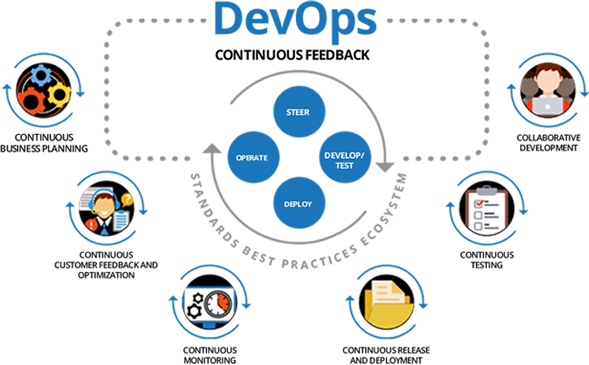Best practices for DevOps automation
DevOps is an approach that combines development and operations to create a collaborative and efficient software development process. Automation is one of the essential aspects of DevOps, as it streamlines workflows and reduces errors. DevOps automation has become a critical component in software development, as it reduces manual intervention and speeds up the entire process.
In this blog post, we will discuss some of the best practices for DevOps automation that can help your team improve efficiency, reduce errors, and deliver high-quality software products.
- Start small and prioritize:
When implementing DevOps automation, it's essential to start small and prioritize. It's easy to become overwhelmed with the sheer number of tasks that can be automated. However, it's important to identify the tasks that are critical and will have the most significant impact on your development process. Start with a single task or process and gradually automate more tasks as your team becomes more comfortable with the new automation process.
- Standardize the development environment:
To ensure consistent results and minimize errors, it's crucial to standardize your development environment. Standardizing your environment involves using the same tools, libraries, and configurations across all development and testing environments. This approach makes it easier to automate tasks and minimizes compatibility issues.
- Automate Continuous Integration and Continuous Delivery (CI/CD):
Continuous Integration and Continuous Delivery (CI/CD) are critical components of the DevOps process. Automating these processes ensures that your team can continuously deliver high-quality software products. Automating the CI/CD process involves using tools to automate the build, test, and deployment process.
- Use version control:
Version control is critical for any software development project. It helps you track changes, collaborate with team members, and revert to previous versions if necessary. Using version control tools like Git, Bitbucket, or SVN can help you automate the version control process and ensure that your team is working with the latest code.
- Automate testing:
Testing is an essential component of software development, and automating testing is critical for DevOps success. Automating testing involves using tools to run tests, generate reports, and track issues. Automated testing helps you identify issues early and ensure that your software product meets the required standards.
- Use monitoring and logging tools:
Monitoring and logging tools are critical for identifying issues and ensuring that your software products are performing optimally. Using monitoring and logging tools like Nagios, Zabbix, or ELK can help you automate the monitoring process and quickly identify and resolve issues.
- Implement DevOps culture:
Implementing DevOps automation is not just about adopting new tools and technologies; it's also about creating a culture of collaboration and innovation. It's crucial to encourage communication and collaboration between development and operations teams. This approach ensures that everyone is working towards the same goals, and there is a clear understanding of the development process.
- Use Configuration Management tools:
Configuration Management tools like Ansible, Chef, or Puppet help you automate the configuration of your infrastructure. Configuration Management tools ensure that your infrastructure is configured correctly and consistently, reducing errors and making it easier to manage.
- Adopt Infrastructure as Code:
Infrastructure as Code (IaC) is a methodology that involves managing infrastructure through code. IaC enables you to automate infrastructure provisioning, configuration, and management. Using IaC tools like Terraform, CloudFormation, or Azure Resource Manager can help you automate your infrastructure and minimize errors.
- Embrace Continuous Improvement:
DevOps automation is a continuous process, and it's essential to embrace continuous improvement. Regularly reviewing your automation processes and identifying areas for improvement ensures that your team stays efficient and effective. Encourage feedback from your team members, and regularly evaluate the effectiveness of your automation processes.
In conclusion, DevOps automation





0 Comments